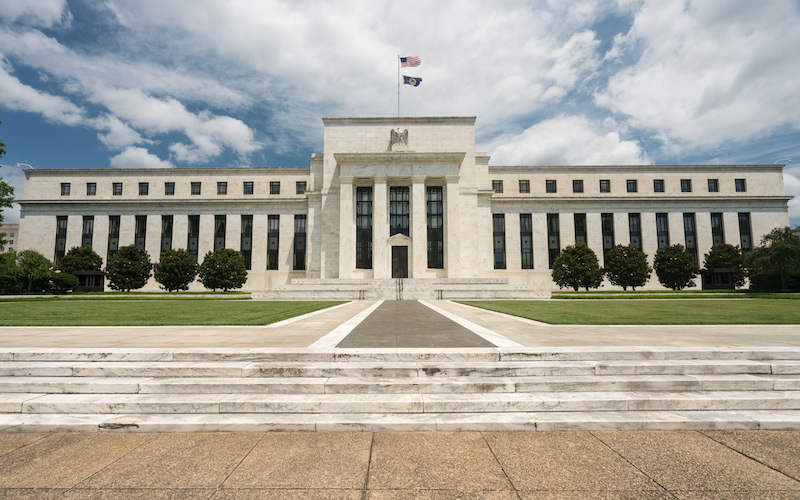
The Federal Reserve should order banks to preserve capital by retaining earnings and halting all shareholder payouts.
As efforts necessary to halt the spread of COVID-19 batter the economy, strains on the nation’s banking system are growing. Yet faced with enormous economic uncertainty, the largest banks in the United States continue to pay billions in shareholder dividends and may soon resume share buybacks to prop up slumping stock prices.
Although a boon to shareholders, these actions could hollow out the U.S. banking system at a time when banks should preserve their capital to absorb impending losses. Indeed, if banks required a bailout after shareholders took all the profits, it would be an astonishing transfer of taxpayer wealth to shareholders and provoke an instant outcry.
Since “banking organizations can only be as robust as the economies they serve,” as the Federal Reserve’s Vice Chairman for Supervision Randal Quarles recently observed, banks would surely argue that they are casualties of circumstances beyond their control. But damage to the Federal Reserve’s credibility would be long lasting, impairing its ability to remain independent.
To prevent this outcome, the Federal Reserve should order banks with assets greater than $100 billion to preserve capital by retaining earnings and halting all payouts, including dividends, share buybacks, and discretionary executive bonuses. These actions would help shore up the banking system’s capital base and could unleash trillions of dollars in additional lending capacity.
The precarious economic environment demands action.
Unemployment has skyrocketed to nearly 15 percent—a sharp reversal from February’s 50-year low of 3.5 percent and far eclipsing the highest rate seen during the 2008 financial crisis. More than 40 million Americans have filed for unemployment benefits over the last three months, as job gains of the last decade have evaporated instantly. Household spending has rapidly declined, and economic output is contracting at an unprecedented pace.
The freefalling economy has serious implications for banks. Households and businesses—including many debt-loaded, private equity owned enterprises—are enduring reduced earnings and need more credit. Many are struggling to meet financial obligations. As bank loans sour and asset prices fall, businesses are drawing on their lines of credit, putting even more strain on banks.
The duration and severity of the downturn are unclear. Without an effective COVID-19 treatment, widespread testing, and a vaccine, the economic outlook remains uncertain. Highly indebted businesses will struggle, and rising default rates and downgrades could trigger a flood of bankruptcies that inflict punishing losses on banks, pushing them toward distress or failure.
Yet the Federal Reserve has not halted capital distributions.
“I do not think that is something that needs to be done at this point,” said Federal Reserve Chair Jerome Powell last month, adding that he “thinks our banks are … highly capitalized, with more high-quality capital than they were before the financial crisis” that occurred in 2008.
The Federal Reserve has also pointed out that the eight largest U.S. banks have temporarily halted share buybacks, and that it will let the upcoming stress tests dictate whether capital distributions should be halted. Meanwhile, after several years of allowing payouts to exceed earnings, the Federal Reserve is easing restrictions on paying dividends and loosening capital standards to spur lending.
Better capitalized banks are an important achievement, but comparing them to 2008 is a low bar. Banks were grossly undercapitalized then, conditions now are more severe, and banks remain highly leveraged. Moreover, the big banks’ voluntary suspension of share buybacks, announced in March, expires next month. Although helpful, it does not apply to dividends or discretionary bonuses and lasts only a few months.
To be sure, stress tests are an important tool to gauge bank resiliency. But the assumptions underpinning the Federal Reserve’s forthcoming stress tests predate the pandemic and are less severe than reality. For instance, they assume a 10 percent unemployment rate in the third quarter of 2021 even though the rate is already nearly 15 percent and likely to spike still higher.
The Federal Reserve intends to perform a series of “sensitivity analyses” to “credibly reflect current economic and banking conditions.” But it is unclear how these analyses will be conducted or whether they will accurately reflect reality. Given the inherent shortcomings of stress tests—including their inability to capture second order effects—and the weakening of stress testing through deregulation in recent years, real life presents the ultimate stress test that banks must pass.
Finally, the Federal Reserve’s policy of easing capital constraints amid the crisis would be sound financial stability policy if it were preceded by a ramp up of capital during expansionary times. But over the last three years, as investor risk appetite and asset prices peaked, the Federal Reserve relaxed capital standards. Diluting them further, while also weakening restrictions on payouts, will damage the overall resiliency of the banking system and undermine recovery.
News reports suggest that the Federal Reserve may be concerned about suspending capital distributions because it could signal a lack of confidence in banking system solvency. But that is why halting payouts for all large banks is important. Precluding some banks could stigmatize them and trigger market turmoil, while not stopping any would inhibit those that wished to halt payouts but feared market perception.
Several prominent voices have urged the Federal Reserve to change course.
“If things work out well, banks can distribute income later on,” former Federal Reserve Chair Janet Yellen said. “If not, they’ll have a buffer that will be needed to support the credit needs of the economy.” Former Federal Deposit Insurance Corporation Chair Sheila Bair, who previously pressed central banks globally to suspend shareholder payouts, recently remarked that she “thinks the Fed is wrong” to allow the payouts to continue because “we do not know how bad this crisis will get.” The Systemic Risk Council, a body of prominent former government officials, also has called on banks to “cease all equity buybacks and dividends,” as have several former Federal Reserve governors and an increasingly louder chorus of academics.
For their part, the Bank of England and the European Central Bank have already halted capital distributions by banks within their jurisdictions. The Bank of England said its decision was a “sensible precautionary step given the unique role that banks need to play in supporting the wider economy through a period of economic disruption.” The European Central Bank noted that suspending distributions would “boost banks’ capacity to absorb losses and support lending to households, small businesses, and corporates” during the crisis.
The Federal Reserve has acted aggressively to stabilize markets during this crisis. But allowing shareholder payouts to continue is a glaring and avoidable mistake. Contrary to what some bank lobbyists have suggested, the Federal Reserve should prioritize solvency over investors’ ability to value banks.
The Federal Reserve should reverse course and prevent any further erosion of bank capital. It should also encourage banks to raise equity capital now while they can. Indeed, being proactive on this front is an important lesson from the last crisis. These actions will promote lending and prevent a political backlash that stokes public resentment and undermines Americans’ already shaky trust in government.




